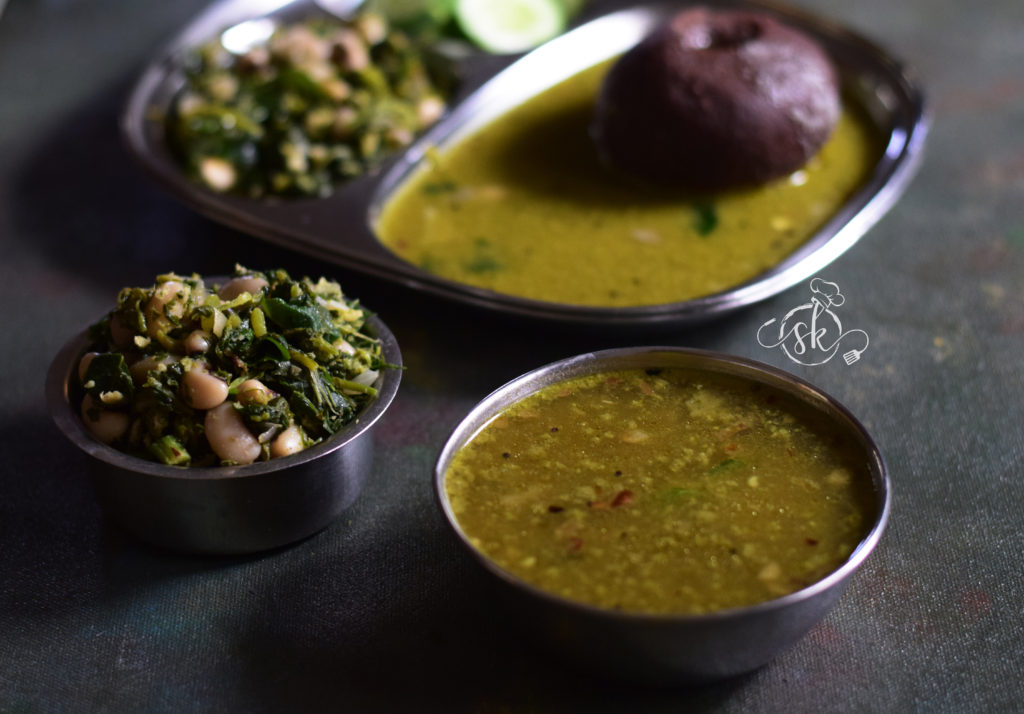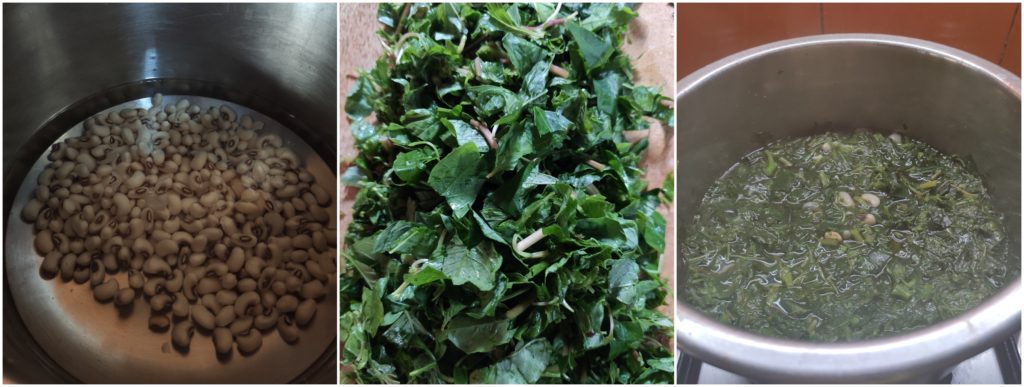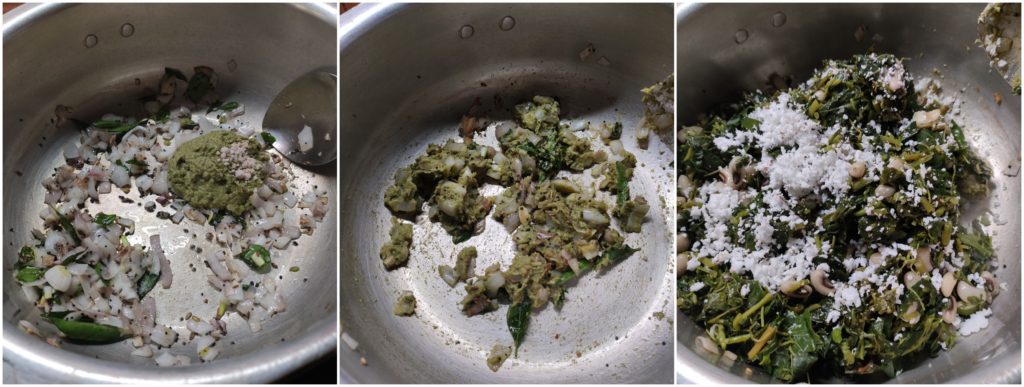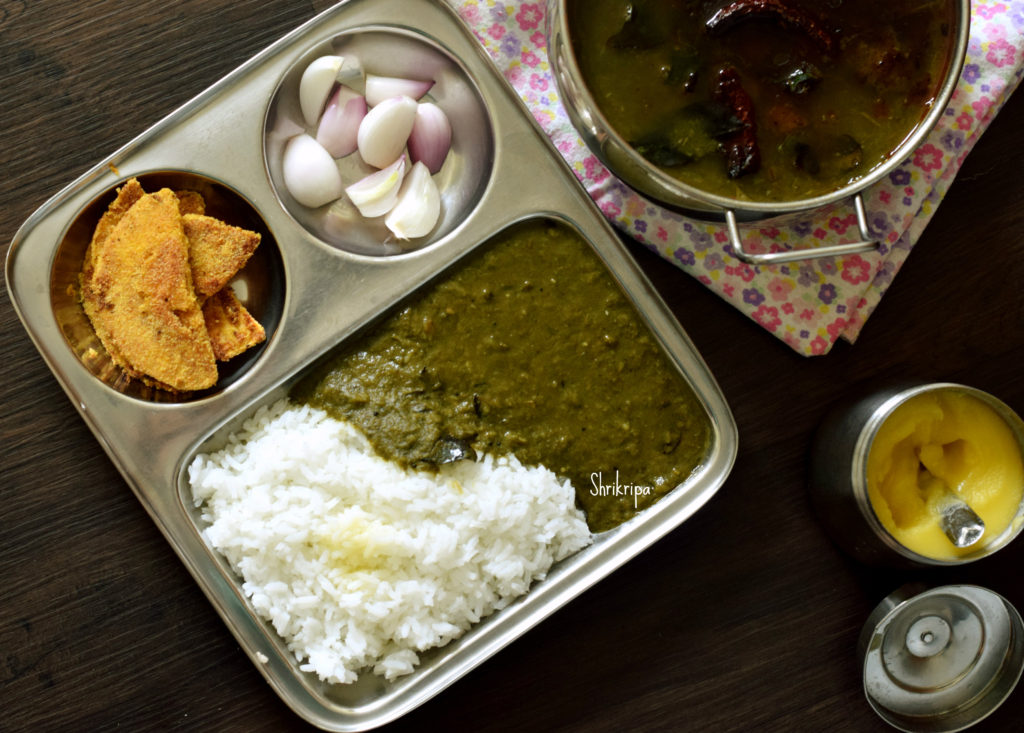Now, what is bassaru? The literal transition of bassaru is Basida (drained) saru (Curry) in the Kannada language. Here, we cook the legumes or dals and the choice of greens or veggies in an open vessel with little more water than the required amount to cook. When the cooking process ends, drain the water (stock) and use it for gravy by adding ground masala. Cooked veggies would turn into the dry curry with added seasoning. They are usually served with Ragi Mudde (finger millet balls) or Rice, topped with ghee with chopped onions or papads as an add-on. Bassaru is a staple affair in Bangalore, Mysore, Mandya, Hassan, Kolar, Tumkur region of Karnataka.
Bassaru Can be prepared using either Toor dal, Sprouted green gram, soaked black eye peas (karamani or Alasandekalu) or Sprouted horse gram etc. for protein ( also as a thickening agent to the curry)
If you prefer Greens, you can use the choice of greens except for fenugreek or Methi leaves.
If you don’t prefer greens, you can opt for any veggies such as French Beans, Ridge gourd, Cabbage etc.
Bassaru can be prepared in various ways, and each family has their method. Here, I am sharing how I make it and relish our Mudde Oota.

Ingredients for Saru:
Black eye bean – 1 cup (overnight soaked)
Chopped greens – 1 bowl
Salt
Green chillies – 4 to 5
Onion – ½ (chopped)
Garlic – 5 – 8
Curry leaves – 4 leaves
Coriander – 1 tsp
Cumin – ½ tsp
Coriander leaves – 1 tablespoon (chopped)
Coconut – 1 tablespoon
Tamarind – 1 tsp
For seasoning:
Oil – 1 tbl spoon
Mustard – 1tsp
Onion – ½ (chopped)
Curry leaves – 1 spring
Method:
-Take one vessel, cook soaked bean. When it is half done, add chopped greens, salt and a pinch of jaggery (it is purely optional) and cook further.

-When beans and greens are perfectly cooked and done, drain the stock, collect the water and keep it ready. (take out one serving spoon of cooked legume to grind the masala).
-At first, we would prepare the masala.
-First, heat 1 tsp of oil, add coriander, cumin, curry leaves, green chillies, onion, garlic and fry until onion becomes translucent. Switch off the gas. Add in chopped coriander, coconut, tamarind and mix everything.
-When fried content is cooled, grind it into a smooth paste by adding one serving spoon of cooked legume by adding a little water.
-Now, reserve little ground masala in the mixer jar ( to make palya) and proceed to make saru.

-Take one vessel, mix drained water/stock, ground masala, adjust the consistency, check for the salt, boil until it is frothy.
-Do seasoning, heat oil, splutter mustard, add curry leaves, chopped onion and fry until light brown. Add it to boiled bassaru.
Now we would see the procedure of palya:

-Take one tawa, heat oil, splutter mustard, add curry leaves, chunks of onion, fry until it is translucent. -Add reserved ground masala, fry for 2 minutes. Now, add cooked and drained legumes and greens.
-Check for the salt, seasoning, garnish with freshly grated coconut and mix everything and enjoy with ragi mudde or Rice.
Note:
-Please cook legumes or dals in an open cooking method. Don’t use the pressure cooker. It indeed makes it mushier and soggier.





